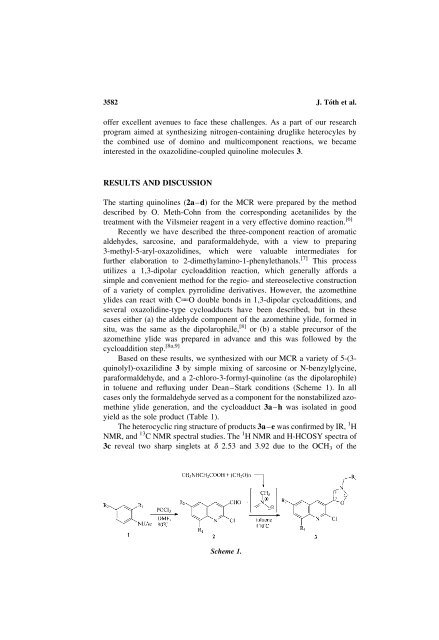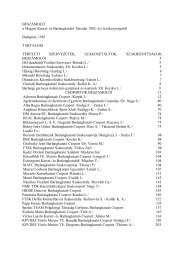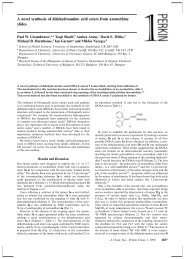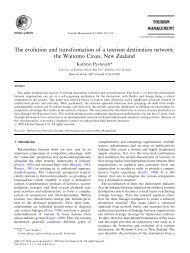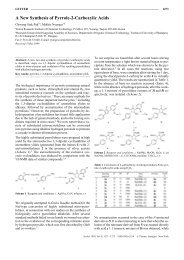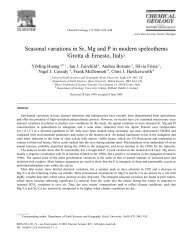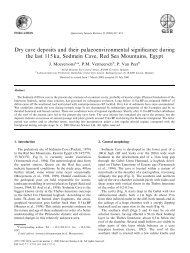Synthesis of New Quinoline Derivatives
Synthesis of New Quinoline Derivatives
Synthesis of New Quinoline Derivatives
Create successful ePaper yourself
Turn your PDF publications into a flip-book with our unique Google optimized e-Paper software.
3582<br />
J. Tóth et al.<br />
<strong>of</strong>fer excellent avenues to face these challenges. As a part <strong>of</strong> our research<br />
program aimed at synthesizing nitrogen-containing druglike heterocyles by<br />
the combined use <strong>of</strong> domino and multicomponent reactions, we became<br />
interested in the oxazolidine-coupled quinoline molecules 3.<br />
RESULTS AND DISCUSSION<br />
The starting quinolines (2a–d) for the MCR were prepared by the method<br />
described by O. Meth-Cohn from the corresponding acetanilides by the<br />
treatment with the Vilsmeier reagent in a very effective domino reaction. [6]<br />
Recently we have described the three-component reaction <strong>of</strong> aromatic<br />
aldehydes, sarcosine, and paraformaldehyde, with a view to preparing<br />
3-methyl-5-aryl-oxazolidines, which were valuable intermediates for<br />
further elaboration to 2-dimethylamino-1-phenylethanols. [7] This process<br />
utilizes a 1,3-dipolar cycloaddition reaction, which generally affords a<br />
simple and convenient method for the regio- and stereoselective construction<br />
<strong>of</strong> a variety <strong>of</strong> complex pyrrolidine derivatives. However, the azomethine<br />
ylides can react with C 5O double bonds in 1,3-dipolar cycloadditions, and<br />
several oxazolidine-type cycloadducts have been described, but in these<br />
cases either (a) the aldehyde component <strong>of</strong> the azomethine ylide, formed in<br />
situ, was the same as the dipolarophile, [8] or (b) a stable precursor <strong>of</strong> the<br />
azomethine ylide was prepared in advance and this was followed by the<br />
cycloaddition step. [8a,9]<br />
Based on these results, we synthesized with our MCR a variety <strong>of</strong> 5-(3-<br />
quinolyl)-oxazilidine 3 by simple mixing <strong>of</strong> sarcosine or N-benzylglycine,<br />
paraformaldehyde, and a 2-chloro-3-formyl-quinoline (as the dipolarophile)<br />
in toluene and refluxing under Dean–Stark conditions (Scheme 1). In all<br />
cases only the formaldehyde served as a component for the nonstabilized azomethine<br />
ylide generation, and the cycloadduct 3a–h was isolated in good<br />
yield as the sole product (Table 1).<br />
The heterocyclic ring structure <strong>of</strong> products 3a–e was confirmed by IR, 1 H<br />
NMR, and 13 C NMR spectral studies. The 1 H NMR and H-HCOSY spectra <strong>of</strong><br />
3c reveal two sharp singlets at d 2.53 and 3.92 due to the OCH 3 <strong>of</strong> the<br />
Scheme 1.


